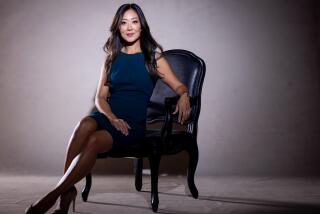K&B; Makes a Hit with French : U. S. Builder Sells 141 Homes in Paris Area in 2 Weekends
- Share via
Croissy Sur Seine, one of the newer, chic neighborhoods of suburban Paris and a project of Los Angeles-based Kaufman & Broad, has become the most successful housing project in France.
K & B President Bruce Karatz said his firm had sold all of the project’s 141 homes, averaging $300,000 each, for a total of $42 million.
“It was mind-boggling to have done this in only two open-house weekends and to end up with a waiting list, besides.”
He attributes the success of the project largely to its excellent location only 9 miles from Paris, and the California-style interior space planning and styling showcased in the model homes.
Luxury Market Entry
Previous K & B housing developments in France had been limited to more affordable housing, while Croissy Sur Seine was its first entry into the luxury home market.
“Figures from July, 1986, to June, 1987, recorded the sale of 8,104 units in Paris and its suburbs, of which 3,000 were single-family detached units with an average purchase price of $149,500,” Karatz said.
“An output of $300,000 represents quite an investment for the French home buyer. But Croissy Sur Seine provided a welcome move-up opportunity for those who already owned property and were prepared to put at least 50% down on the new purchase.”
The profile of the Croissy Sur Seine buyers emerges largely as families with two incomes, mostly professionals in their mid-30s and mid-40s, several with children, and annual incomes ranging from $60,000 to $75,000.
Frustrating Period
For Karatz, the extremely slow approval process started three years ago, and is remembered as the most frustrating period for the development.
To increase the marketing potential and visibility, Karatz purchased another site on which to build the model homes two blocks from the project site on a well traveled road. No other advertising was used, he said.
Kaufman & Broad, no stranger to France’s building industry, rated the third largest home builder in France, has built about 20,000 homes there since 1970, and was the only builder that bought the land, planned it, created the infrastructure, selected the architect and arranged financing for the home buyer, Karatz stated.
“When we entered the French market 18 years ago, there was one other American home builder who is now no longer in business,” he added. “Our other projects consisted of 150 to 200 homes, but we also did larger ones with up to 1,500 homes, using French subcontractors in each case.”
More Costly Project
This year, the firm plans to build a walled residential community in the western suburban region that will be even more luxurious and costly.
The Croissy Sur Seine, still under construction, was designed by an in-house team of architects. The Design I interior design firm was commissioned to supervise, coordinate and acquire the furnishings for the model homes, Karatz said.
Project overseer for Design I was Sara Bartlett, a senior designer who is fluent in French. She found the experience both exciting and frustrating.
“French workers are excellent craftsmen and easy to work with, but they definitely have a different work orientation and sense of time than we do. We used some French and European sources but ended up having much of the furniture custom designed to fit our needs,” Bartlett said.
Open Kitchens
“French home buyers had mixed reactions to our models. It was a new experience, for instance, to view open kitchens leading to family rooms and dens. Some felt uncomfortable with that arrangement, others loved it.
“The use of wall-to wall carpeting on the ground floor was another departure from what the French are used to. The vaulted ceilings in the entrance, the large front doors with side-glass insets, the 6,000-square-foot lots with oversize garages and verandas seemed especially appealing to the visitors.”
For Bartlett, designing for the French upscale market required a “less funky, more sophisticated” approach. “They like the marble and stone and favor a more transitional look. Antique reproductions are considered bourgeois so, unless you give them an authentic 300-year-old antique they would rather go with white-washed woods and other modern treatments.”
More to Read
Inside the business of entertainment
The Wide Shot brings you news, analysis and insights on everything from streaming wars to production — and what it all means for the future.
You may occasionally receive promotional content from the Los Angeles Times.








